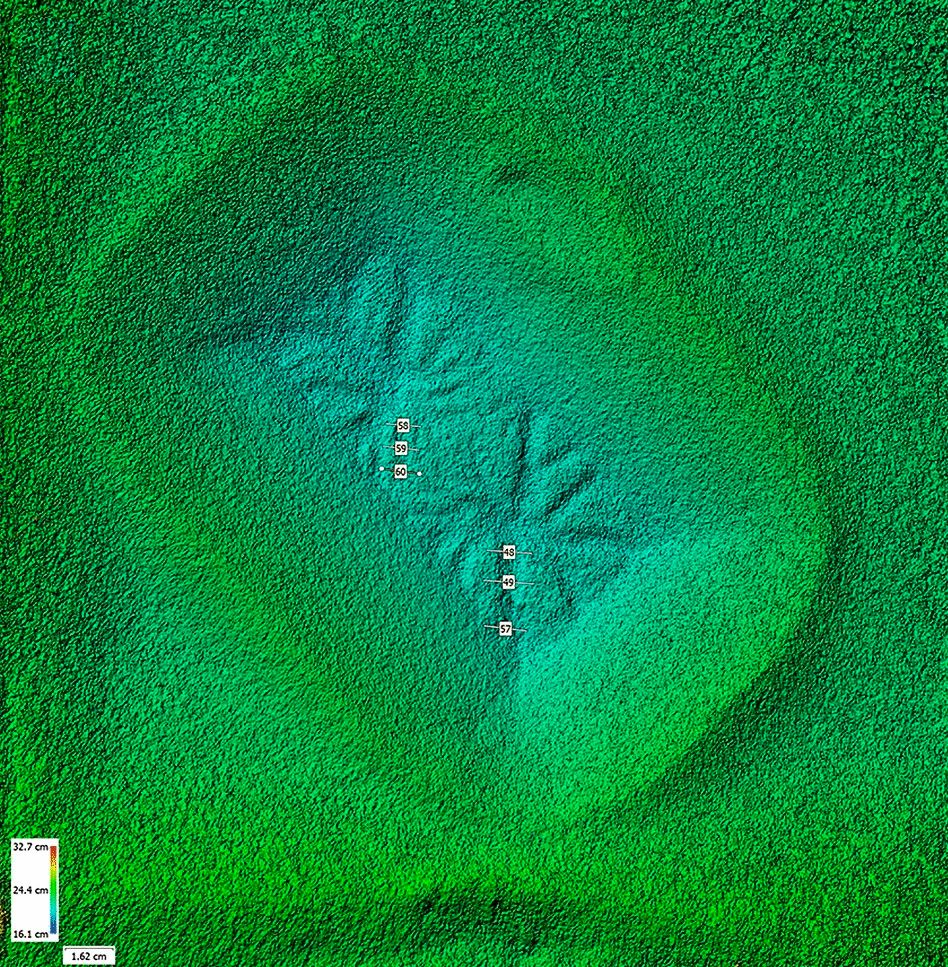Ziggy played guitar and British scientists played with a large piece of dry ice to discover what lies behind the strange alien patterns known as spiders on Mars. On satellite images of the Red Planet’s south pole, these patterns are clearly not real spiders, but the black, fan-shaped shapes etched into the Martian surface look so unpleasant that researchers have named them Araneiforms (meaning spider) because they discovered them more than 20 years ago.
Decade– An old mystery finally solved!
With a width of 1 km, these giant forms take up no space on the earth. But in another study published on 19. In a paper published in March in the journal Scientific Reports, the scientists reproduced a scaled-down version of the spiders in their lab using a piece of carbon dioxide ice (also known as dry ice) and a machine that mimics Mars’ atmosphere. When the Viral ice connected with the hot Martian sediment floor, some of the ice quickly changed from a solid to a gas (a process called sublimation), creating spider-like cracks where escaping gas was forced through the ice.
The study is the first experimental evidence for a surface cycle that would alter the polar event on Mars, said Lauren McCown, head of the study and planetary scientist at the Open University in England, in a statement. Research suggests that the spider-like patterns we see on Mars in the form of circles may have been created by the instantaneous conversion of dry ice from solid to gas.
This is an example of laboratory-made spiders, with cross sections showing that the depth of the depressions decreases from the center of the arans, as is the case on Mars. (Image credit: Scientific Reports, QC at 4.0)

According to NASA, the atmosphere of Mars contains more than 95% carbon dioxide (CO2). So a large part of the ice that covers all the poles of the earth in winter also consists of CO2. In a recent report, researchers calculated that spiders on Mars can stretch out in the spring when daylight falls on a transparent layer of CO2 ice and warms the ground. This warming causes the ice to sublimate from its base, creating a downward pressure factor under the ice until it eventually disintegrates. Displaced gas escapes through cracks in the fountain ridge, leaving behind the bright spider legs seen on Mars today, the group theorizes.
Hypothesis testing
Until recently, scientists did not have the opportunity to test this hypothesis on Earth, where the climatic conditions are very unusual. In the new study, however, the researchers recreated a small piece of Mars here on Earth using a device called the Open University Mars Simulation Chamber. The group placed a sediment of slippery pellets in the chamber, then the scaffolding you see in the next arc after the clamping machine was used to hang a block of dry ice above the pellets. The group modified the chamber to mimic the air conditions on Mars by gradually lowering the block of dry ice onto the pellets.
Tests have shown that the spider hypothesis is essential. Despite the size of the sediment grains, the dry ice still sublimated on contact and the escaping gas was pushed upward, causing spider-leg cracks. The researchers found that the spiders’ legs extended more when the pellets were better and less when the pellets were larger. While these studies are not comprehensive, they do provide basic factual information about how spiders may have originated on Mars. This day is not a frivolous paradise. Follow us for more news!




